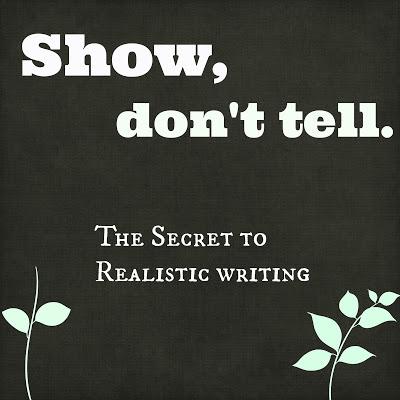 What's the secret to writing realistic fiction?
What's the secret to writing realistic fiction?Some would say it's all about the details. Others might say it's definitely a question of whether or not you can can get the dialog to be interesting enough to capture a reader's imagination. And then there are those who may insist that it has nothing to do with any of these things, and that it all comes down to style.
I think, as an author, that all of these things factor into whether or not writing is realistic. But something that is often missed in the world of fiction is the fact that less is usually more. In other words, realistic writing is usually more about showing a reader what's going on as opposed to telling them about it. Sound confusing? I understand, believe me. When I first started writing, that made no sense to me whatsoever. How are you supposed to show how something is happening without telling about it when you're writing a book? For crying out loud. The author's medium is the written word!
And then I had a lightbulb moment.You don't need a ton of details to make something real. For example, if you're writing about a scene that takes place in a kitchen, you really don't need to mention the color of the walls unless you think it's absolutely unavoidable. Sprinkle details like that in slowly. One at a time. Spaced far apart. For example:
MoreJean walked into the old kitchen. The walls were yellow, wallpaper torn into pieces at the corner. The floor looked like it had been abused for too many years. The fridge was tipped on its side, emitting a rotten odor that made Jean's stomach churn. Everything about the room was disgusting.LessJean walked into the kitchen. It was dirty. Stained. Abused. It also smelled a little like rotten eggs. Not exactly a positive sign.
You don't need a ton of details to paint the same picture in someone's mind. Give the basics, and let the readers' imaginations sketch out the rest of the portrait. Make sure you show what's happening instead of telling it. Rather than saying: Jean got punched in the gut.Say: The air rushed out of Jean's lungs as fist met flesh. This wasn't good. In fact, this kind of sucked. Big time. I'm adding a little sarcastic commentary here - because I can't help it - but you get my point. Don't recite what's happening. Show it. Describe what's going on without saying it outright like you're reading from a textbook. Keep it fresh. Like it's jumping right out of somebody's brain as it's happening to them. And let's face it, we don't necessarily think of events in words as it's happening. We feel them. Emotions, temperatures, physical sensations. Our writing should be no different. It should be as realistic and simple as the most common thoughts that bounce through our heads throughout the day. Show, don't tell!


